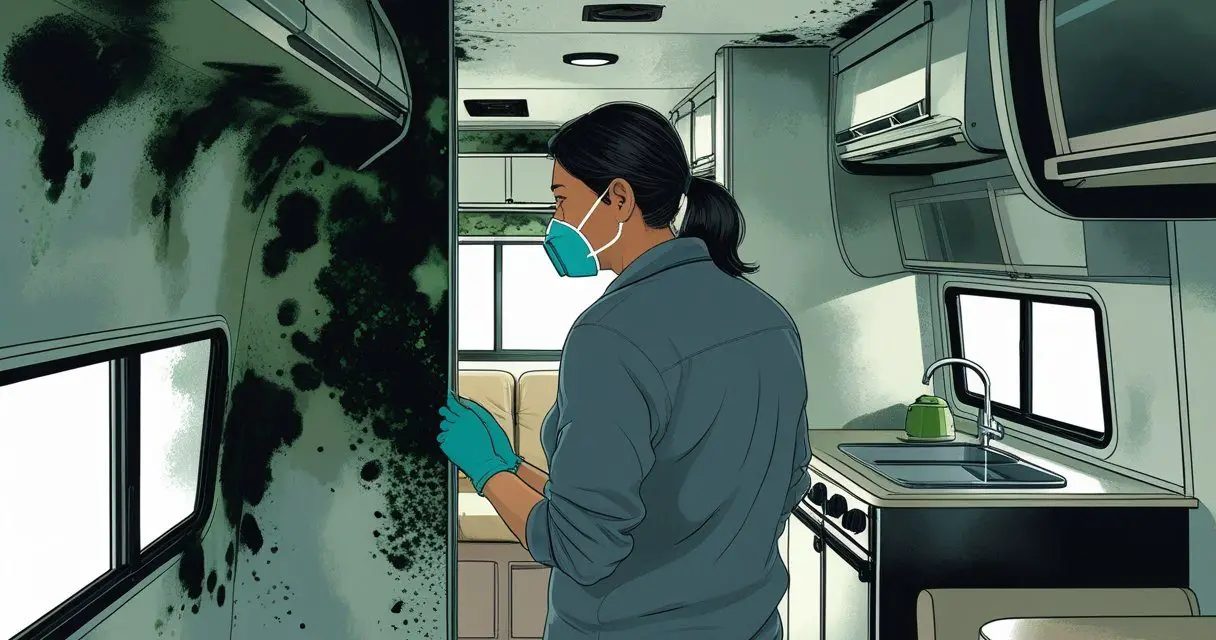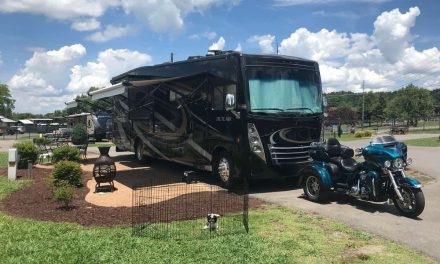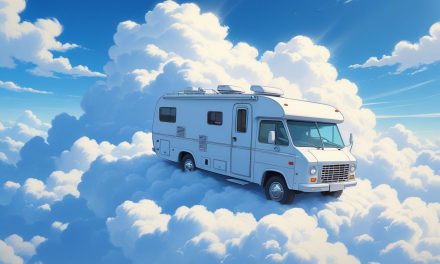Would you like to save this article?
Mold in an RV isn’t just an eyesore—it can affect your health in unexpected ways. When moisture builds up inside your camper, mold can grow on walls, ceilings, and even under furniture.
Breathing in mold spores can lead to coughing, headaches, fatigue, and other symptoms that make travel uncomfortable and unhealthy. Yes, RV mold can make you sick if you’re exposed to it for long periods or in high amounts.
You might not notice the problem right away. A musty smell, water stains, or lingering dampness can be early signs that mold is hiding somewhere inside.
Over time, exposure can irritate your lungs, trigger allergies, and worsen asthma. Understanding these signs helps you act fast before the problem spreads.
Keeping your RV dry and well-ventilated is the best defense. With a few simple habits—like checking for leaks, cleaning regularly, and using a dehumidifier—you can prevent mold from taking hold and protect your health on the road.
Key Takeaways
- Mold exposure in an RV can cause real health problems if ignored
- Early signs like odors or dampness often point to hidden mold
- Regular cleaning and moisture control help prevent mold growth
How RV Mold Exposure Can Make You Sick
Breathing mold-contaminated air in your RV can irritate your lungs, eyes, and skin. Prolonged exposure may cause allergic reactions, breathing problems, or fatigue, especially if you already have asthma or allergies.
Mold can also release toxins that affect your immune and nervous systems.
Mold Spores and Air Quality
Mold spreads through tiny spores that float in the air. When you inhale these spores, they can settle in your respiratory tract and cause irritation or inflammation.
This often leads to coughing, congestion, or wheezing. High humidity and poor ventilation inside RVs make it easy for spores to multiply.
Once mold grows behind walls or under flooring, the air quality quickly worsens. You may notice musty odors, fogged windows, or stuffy air, all signs of trapped moisture and limited airflow.
People with asthma or weakened immune systems may react more strongly. Even short stays in a contaminated RV can trigger sinus infections, eye irritation, or skin rashes.
Toxins Produced by Mold
Some molds release mycotoxins, chemical substances that can harm your body when inhaled or touched. These toxins may cause fatigue, headaches, or dizziness after repeated exposure.
In small spaces like RVs, toxin levels can build up faster because of limited air exchange. Mycotoxins can affect how your body responds to allergens and may weaken your immune system over time.
Sensitive individuals might experience memory problems, muscle pain, or digestive upset. Keeping surfaces dry and removing visible mold promptly helps limit toxin production.
Using a HEPA air purifier and improving ventilation can also lower airborne toxin levels, making your RV safer to live or travel in.
Common Health Symptoms Caused by RV Mold
Mold inside an RV can release spores and toxins that affect your breathing, immune system, and energy levels. Prolonged exposure often leads to irritation in the lungs, allergic responses, and persistent tiredness that improves once you leave the contaminated space.
Respiratory Issues
Mold spores enter your body through the air you breathe. When inhaled, they can irritate your airways and lungs, especially in enclosed RV spaces with limited ventilation.
You may notice coughing, wheezing, shortness of breath, or chest tightness soon after spending time inside. People with asthma or existing respiratory conditions often experience stronger reactions.
In some cases, mold exposure can trigger asthma attacks or make breathing feel labored, even at rest. If your symptoms ease when you step outside, it’s a strong sign that poor indoor air quality is the cause.
Allergic Reactions
Your immune system may react to mold spores as if they were harmful invaders. This response can cause sneezing, runny nose, itchy eyes, or skin rashes.
These symptoms often resemble seasonal allergies but tend to persist as long as you remain in the RV. Some people also report sinus pressure, watery eyes, or throat irritation.
Reactions can vary depending on your sensitivity and the amount of mold present. Keeping humidity below 50%, fixing leaks promptly, and avoiding damp materials such as carpets or cushions can help limit mold growth and reduce allergic triggers.
Using a dehumidifier or opening windows when weather allows can also make a noticeable difference.
Chronic Fatigue
Mold exposure can leave you feeling unusually tired or mentally foggy. This happens because your body’s immune system works constantly to fight off mold toxins, which can drain your energy over time.
You might experience fatigue, headaches, or difficulty concentrating, even after getting enough sleep. These effects often fade once you spend time away from the contaminated environment.
If you notice ongoing tiredness while staying in your RV, inspect hidden areas such as walls, flooring, and air vents for moisture or mold. Addressing the source and improving ventilation can help restore your energy and focus.
Who Is Most at Risk from RV Mold Exposure
Some people experience stronger reactions to mold exposure than others. Factors like age, immune strength, and existing health issues can make certain groups more sensitive to mold spores and toxins in an RV environment.
Children and Elderly
Children and older adults often have weaker immune systems, making it harder for their bodies to handle mold exposure. Mold spores can irritate the lungs and airways, which are still developing in children and may already be weakened in seniors.
You might notice coughing, sneezing, eye irritation, or fatigue after spending time in a moldy RV. For children, long-term exposure can sometimes worsen asthma or trigger allergies.
For older adults, it can increase the risk of respiratory infections or worsen chronic breathing problems. Because RVs are small, mold spores can spread quickly through the air and surfaces.
Keep humidity low, dry out damp areas, and check under sinks, behind walls, and near windows for signs of moisture. Regular cleaning and ventilation help protect both young and elderly travelers from harmful exposure.
People with Preexisting Conditions
If you have asthma, allergies, or a weakened immune system, you face a higher risk from RV mold. Mold can trigger asthma attacks, allergic reactions, or sinus problems.
People with chronic lung disease, such as COPD, may experience more severe breathing difficulties. Those undergoing treatments that suppress the immune system—like chemotherapy or steroid use—can also react more strongly to mold exposure.
Even limited contact with spores may cause inflammation or infection. To reduce risk:
- Use a dehumidifier to control moisture.
- Clean air filters often.
- Avoid sleeping or cooking in areas with visible mold or musty odors.
Taking these steps helps you limit mold exposure and protect your health while traveling or living in an RV.
Warning Signs of Mold in Your RV
Mold often develops in damp, poorly ventilated areas of an RV and can cause both property damage and health issues. You can spot early warning signs by checking for visible growth, unusual odors, and ongoing moisture problems.
Visible Mold Growth
You can often see mold before you smell or feel its effects. It may appear as black, green, white, or gray spots on walls, ceilings, or near windows.
Soft materials like carpet, upholstery, and mattresses can also trap moisture and hide mold underneath. Look closely at corners, under sinks, and around vents.
These areas tend to collect condensation and leaks. If you notice peeling wallpaper, bubbling wall panels, or stained surfaces, moisture has likely been present long enough for mold to grow.
Use a flashlight to inspect dark storage areas and behind furniture. Even small patches can spread quickly if left untreated.
Musty Odors
A musty or earthy smell often signals hidden mold, even when you cannot see it. This odor comes from microbial compounds released as mold grows.
The smell tends to be stronger after rain or when the RV has been closed up for a while. You might notice the scent near air vents, closets, or under cushions.
When the odor lingers even after cleaning or airing out the space, it often means mold is growing out of sight—possibly behind wall panels or under flooring. To locate the source, move items and check for dampness.
A portable dehumidifier or air purifier can help reduce moisture and odor, but you still need to find and address the root cause.
Condensation and Moisture Problems
Persistent moisture creates the ideal environment for mold. Watch for foggy windows, damp walls, or water stains on ceilings and floors.
Condensation often forms when warm indoor air meets cold surfaces, especially in humid or cold climates. Common causes include roof leaks, poor insulation, or blocked vents.
Check seals around windows, skylights, and plumbing fixtures for cracks or gaps. You can reduce moisture by running your air conditioner or a dehumidifier and keeping air circulating.
Regularly inspect storage spaces and underbeds for dampness. If moisture continues despite your efforts, it’s best to investigate for hidden leaks or structural issues.
How Quickly Can You Get Sick from RV Mold
How fast you feel sick from RV mold depends on your health, the mold type, and how long you stay exposed. Some people react within hours, while others may not notice symptoms for days or even weeks.
If you have allergies, asthma, or a weakened immune system, you may feel effects sooner. Mold spores can trigger sneezing, coughing, itchy eyes, or skin irritation shortly after exposure.
Longer exposure can cause fatigue, headaches, sinus problems, or breathing issues. These symptoms may come and go until the mold is removed and the air quality improves.
| Exposure Time | Possible Reaction | Notes |
|---|---|---|
| 1–9 hours | Sneezing, itchy eyes, mild cough | Common in sensitive people |
| 1–3 days | Nasal congestion, sore throat | Often from moderate exposure |
| Weeks or longer | Fatigue, persistent cough, breathing problems | Linked to ongoing exposure |
You might not feel sick after a single short exposure, especially if you are healthy. But repeated contact with moldy air in your RV increases the chance of developing symptoms over time.
Keeping humidity low, fixing leaks quickly, and cleaning damp areas can help prevent mold from spreading and reduce your risk of getting sick.
Preventing and Removing Mold in RVs
You can stop mold from spreading in your RV by keeping moisture under control, cleaning often, and removing mold safely when it appears. Paying attention to humidity, airflow, and leaks helps protect both your health and your RV’s structure.
Reducing Moisture and Humidity
Mold grows where moisture builds up. Keep humidity below 50% using a dehumidifier or vent fans in your kitchen and bathroom.
Open windows when weather allows to let fresh air circulate. Check for leaks around windows, doors, and roof seams after rain.
Reseal any cracks or gaps with RV-safe sealant. Avoid drying wet clothes or towels inside your RV since this increases humidity.
Use absorbent materials such as moisture traps or desiccant packs in storage areas. When storing your RV, leave vents slightly open or use vent covers to maintain airflow.
Regular Cleaning and Inspections
Clean surfaces with mild detergent and water, especially in damp areas like under sinks or near plumbing lines. Wipe down windows and walls regularly to prevent condensation buildup.
Inspect your RV at least once a month for signs of leaks, discoloration, or musty smells. Focus on hidden spots such as behind furniture, under mattresses, and inside cabinets.
Keep a short checklist:
| Area | What to Check | Action |
|---|---|---|
| Roof & Seals | Cracks, soft spots | Reseal or patch |
| Plumbing | Drips, dampness | Tighten fittings |
| Flooring | Soft or dark areas | Dry and clean |
Dry wet spots immediately using fans or heaters.
Safe Mold Removal Methods
If you find mold, wear gloves, goggles, and a mask to avoid breathing in spores. For small patches on hard surfaces, scrub with a mix of water and mild detergent or a commercial RV mold cleaner.
Rinse and dry the area completely. Avoid using bleach on porous materials like wood or fabric because it doesn’t reach deep mold roots.
Replace any materials that are soft, warped, or stained beyond cleaning. For large or hidden infestations, contact a professional who understands RV construction.
They can safely remove affected wall panels or flooring and repair any structural damage caused by moisture.





